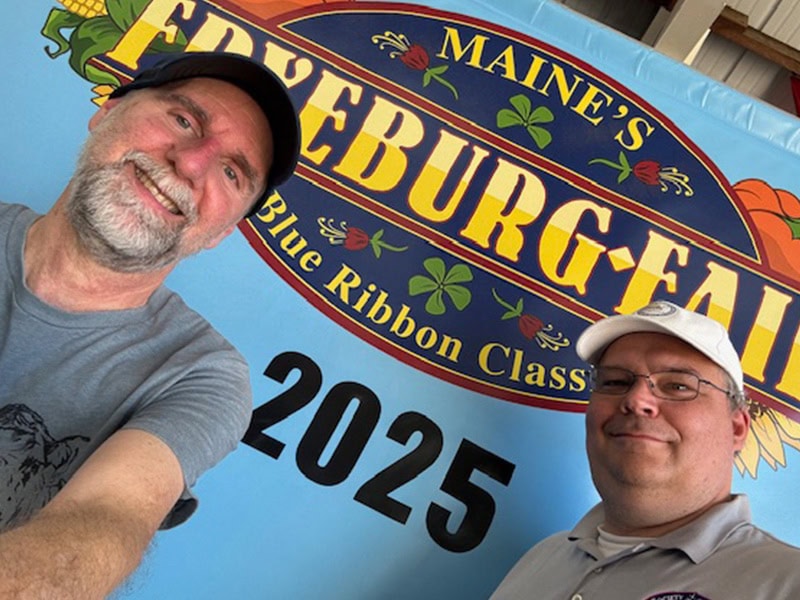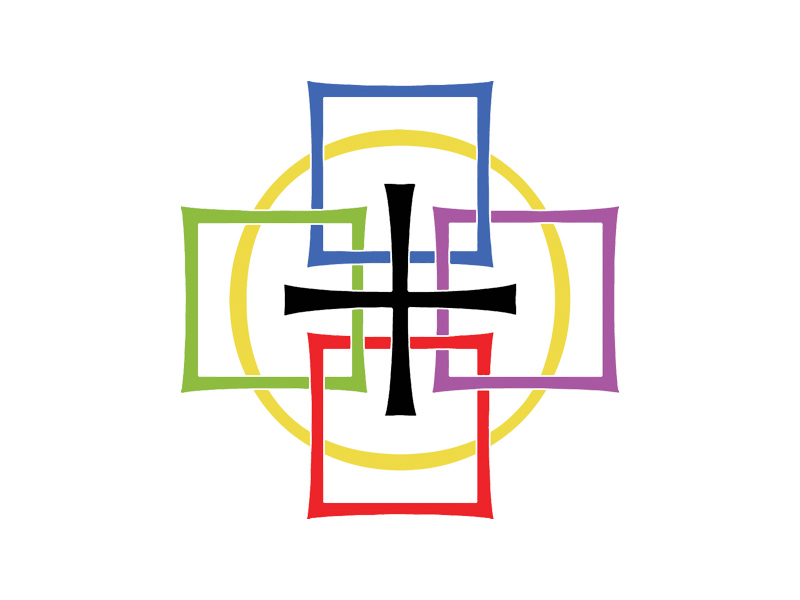Written by Kurt Fekete
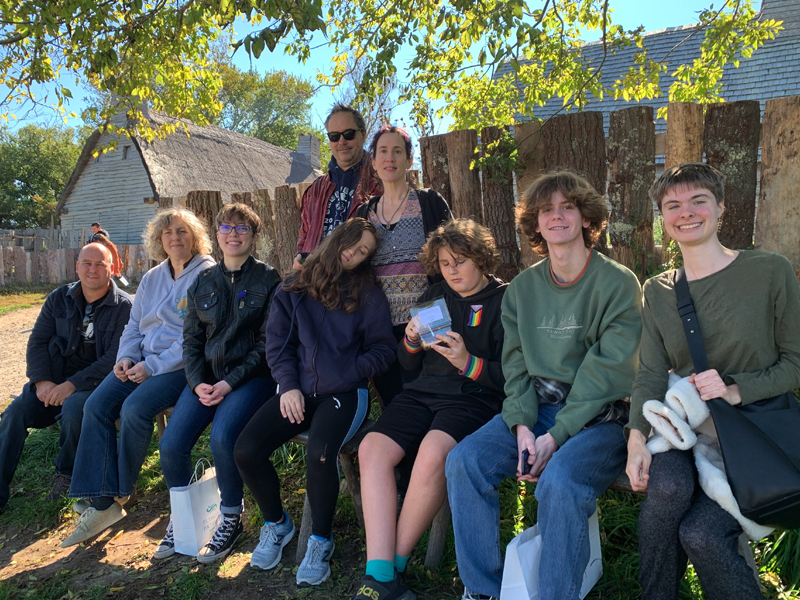
A small but enthusiastic group of youth gathered in S. Duxbury, Massachusetts at the Cedar Hill Retreat Center on a brisk, beautiful, October weekend to learn more about Emanuel Swedenborg’s concept of correspondence. We started off the retreat with a fun game of Apples to Apples on Friday night while waiting for everyone to arrive. Saturday morning after breakfast we discussed the schedule, arranged the meal prep teams, and did a little icebreaker where the retreaters got their first taste of correspondence by playing a game where they matched metaphors with meanings.
Rev. Kevin Baxter came in to start our sessions by leading a morning discussion introducing Swedenborg’s concept of correspondence. He started off by asking the youth to tell him the creation story from the Bible. “Adam and Eve,” several youths exclaimed! Then another retreater said, “Wait, what about the story where the sun, moon, and stars are created?” “Exactly!” proclaimed Kevin, “Literally, the Bible doesn’t make sense. There are two creation stories.” Kevin went on to explain how the American statesman John Bigalow (1817 – 1911), had the same concern while reading the Bible. It just didn’t make sense. Did animals come first or humans? How can there be light with no sun? Then, in 1854, a providential encounter with a stranger led John Bigalow to the works of Emanuel Swedenborg. From there, everything fell into place, and he went from agnosticism to faith. With the aid of correspondences, the Bible made sense and Bigalow later went on to write The Bible That Was Lost and is Found in 1893. Kevin explained how knowing correspondences is like having a decoder ring. Glimpses into the inner meaning of the Bible provides life lessons that are directly practical and useful in solving real life challenges. Kevin went on to talk about some general correspondences, like water and stones, gathered from Biblical stories like the Flood (Genesis 7), the Tower of Babel (Genesis 11), and Jesus turning water into wine (John 2:1-11).
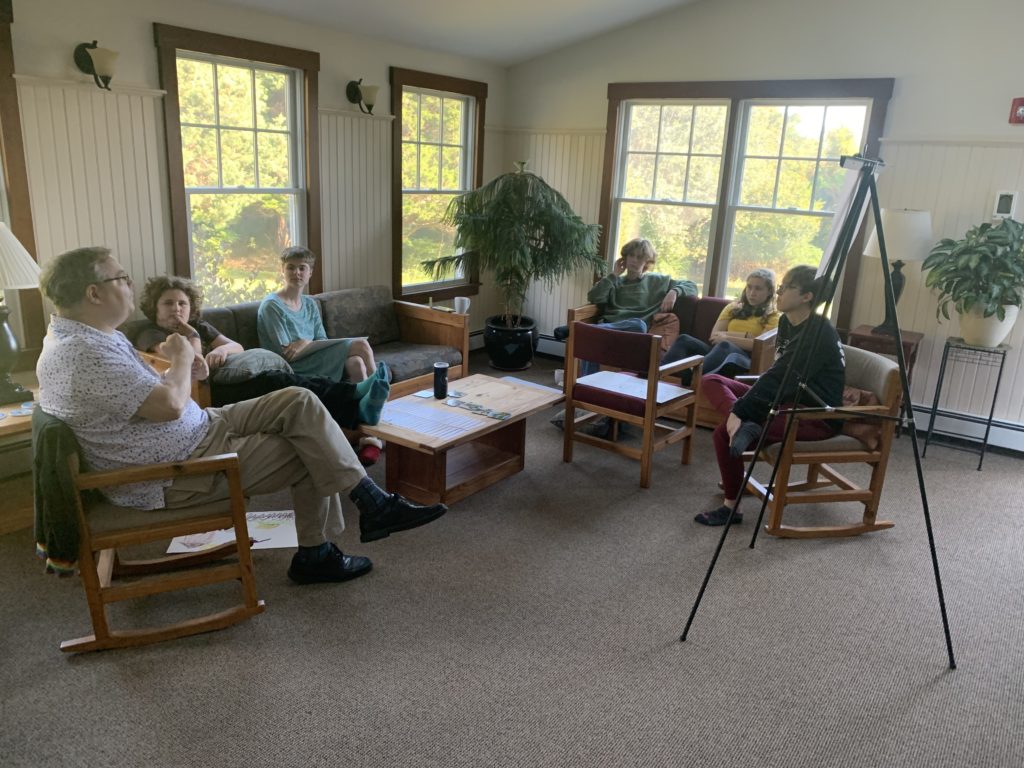
Kevin’s second session after lunch involved the youth making their own correspondential picture story. The retreaters illustrated a memorable scene from their life using art supplies and poster board. Then each youth had an opportunity to present the artwork scene to the group and describe what was occurring. The group and the presenter then attempted to apply relevant correspondences to the situation. As an example, one teen shared a situation of a bus trip home from a school outing. Boys on the bus jumped out of their seats and started having a push-up competition in the aisle of the moving bus. Everyone on the bus acted differently. Some people cheered the boys on, some people ignored them, some people quietly watched, some people questioned the riskiness of this activity but did not intervene. From the standpoint of correspondences, we talked about what it means to “go home.” What is the correspondence of home and what does it mean to go home? Then we talked about the correspondence of the risky activity on the bus. What does physical exertion and risky behavior represent in your life? How are we like each of the people on the bus? Do we traverse life primarily as an observer? Do we cheer on other people taking risks? Do we like to quietly ignore the world around us? Looking at real life situations using correspondence was a useful and productive way to share about our own personal life choices, decisions, and path.
I led the Saturday evening session. My presentation was all about the correspondence of fruit trees and how they can lead to the fulfillment of dreams. I started with the beautiful reading of the third day of creation – the appearance of dry land, plants, and how every seed produces more of its own kind of plant (Genesis 1:9-13). We talked about the parable of The Fig Tree that was not producing fruit (Luke 13:6-8). We learned what it means correspondentially to dig around the roots and feed a tree that is barren so that it might bear fruit (A barren tree can refer to a person that is not being useful. When you dig at a person’s roots you are shaking their foundation. You are getting them to really consider what they are doing and not doing. After which, you feed the person. You’re providing reasons for them to do good deeds. You help them understand what they get out of it. Hopefully when you help someone who is not doing useful things, they improve and can “bear fruit” as useful deeds and actions.). The second half of my session involved the retreaters completing a worksheet where they consider a dream (seed), define goals that can make the dream a reality (germination), list things you might need to learn and do (stem and leaves), determine how you can show off your talent and find delight (flower), and finally, determine how your dream can be useful to yourself and others (fruit). The youth also considered pitfalls and challenges that might prevent their dream seed from becoming reality bearing fruit. The completed worksheets that the retreaters shared were complex and extremely interesting. The dreams varied from becoming an independent adult, to traveling the world, to launching a new business idea! I was amazed at how well the youth could vision their dreams and construct plans to bring them to fruition.
Rev. Sage Cole and her field ed student Eleanor Schnarr arrived on Sunday afternoon. Eleanor was excited to conduct the mid-day session on spirituality and breathing. She presented a wonderful slide show on yogi breathing which included fascinating scientific research on how this special breathing technique aligns the brain and nervous system and puts the body into harmonious balance. Then she led us in some experiential breathing where we had the opportunity to try this unique and powerful breathing method. Eleanor shared some of her personal experiences visiting India and learning this breathing technique. This was a very interesting session, and several teens talked with Eleanor after her session to learn more about her intriguing life and spiritual path.
Interspersed between all of these amazing sessions were some great activities and recreation. Jeff Oelker, Midwest driver and staff member, took many trips with the retreaters down the path to the beach on Kingston Bay. Here they explored the tidal pools and hunted for mollusks and other numerous sea creatures. Evening visits to the beach for sunset were a notable retreat highlight. Saturday evening our group went to Alley Kat Lanes for the annual rock-n-bowl and arcade game outing. Since we were a smaller group this year, we had the pleasure of visiting the Plimoth Patuxet living history complex in Plymouth, Massachusetts. Here we visited a replicate of the seventeenth century settlement established by the English colonists Pilgrims as well as a site of the Patuxet people upon whose land the Pilgrims settled. It was captivating to learn about the life of the indigenous people while seated around a fire in a Patuxet hut and equally interesting to listen and watch the professional role players in the English Village that spoke, acted, and dressed appropriately for the period. I made sure to ask the “villagers” essential questions about their relationship with God and spiritual beliefs so the youth could learn a little about the Separatist Puritan religion.
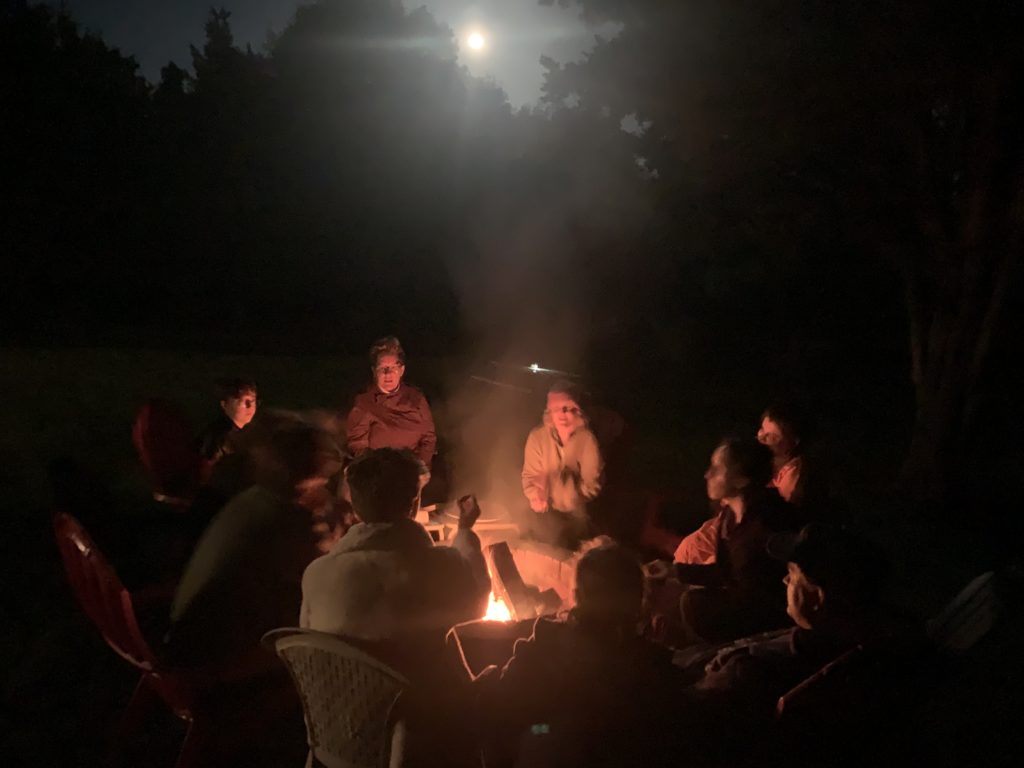
As our retreat drew to a close, we lit a Sunday evening campfire. Under a gorgeous rising full moon and a sky filled with a myriad of stars, Rev. Sage Cole led us in a moving closing communion service. We sat around the campfire circle and we each selected a rock. As we held our rock, Sage told us how rocks correspond to solid truths in our life. Sometimes smooth, sometimes sharp and jagged, these rocks help us to recognize the critical role that truth has in our life. We openly shared an important bit of understanding or wisdom that we have found to be solid truth. I shared one of my truths. The truth I shared was that these retreats and the connections made with the individuals at these retreats are the most important gift that I have ever received. It is my hope and prayer that all the retreaters have this same experience.
For information on the upcoming retreats in November and December, please see p. 129 of the October/November issue or the Youth League page.
Read the full issue of the October/November 2022 Messenger
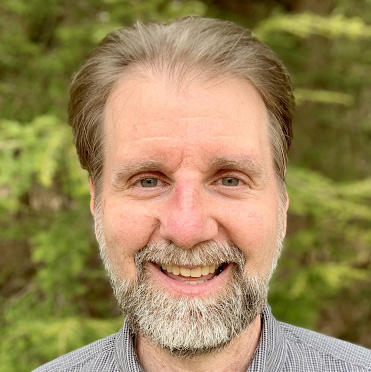
Meet Kurt Fekete
Kurt Fekete has been the Youth Director for the Swedenborgian Church of North America for over twenty years. He also currently is serving as Vice President of the denomination.

